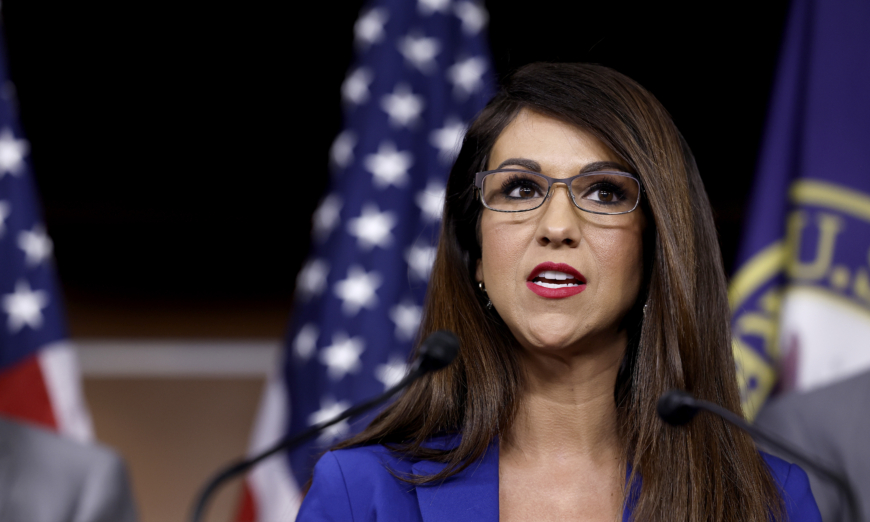Analysis shows that voting for Joe Biden is strongly correlated with states having the lowest birth rates.
Women in blue states have far fewer babies than those in red states as the U.S. birthrate plunges downward, according to a conservative think tank analysis.
While political affiliation may seem like an odd determiner of birth rates, states that gave Biden the largest share of votes in 2020 have the lowest birth rates, according to Chuck DeVore, vice president of national initiatives at the Texas Public Policy Foundation.
On the other hand, birth rates appear to be highest in states with a lower cost of living, and where more people practice organized religion, he told The Epoch Times.
Red states generally have a lower cost of living because they tend to have fewer regulations and lower taxes. And the price of housing is usually lower in red states because of fewer land restrictions, he said.
Texas Public Policy Foundation, Chuck DeVore interview with NTD Capitol Report, July 6, 2022.
Political Affiliation and Birth Rates
Chuck DeVore, vice president of national initiatives at the Texas Public Policy Foundation, has found an interesting correlation between political affiliation and birth rates. According to his analysis, states that gave Biden the largest share of votes in 2020 have the lowest birth rates. This may seem like an odd connection, but it sheds light on the factors influencing family formation in different states.
DeVore also discovered that birth rates tend to be highest in states with a lower cost of living and a higher prevalence of organized religion. These factors contribute to a more favorable environment for starting a family.
Red states, which generally have fewer regulations and lower taxes, offer a lower cost of living. This, combined with fewer land restrictions leading to lower housing prices, makes it more affordable for families to settle down and have children.
Factors Affecting Birth Rates
Chuck DeVore’s analysis challenges the popular reasons cited by mainstream media for low birth rates, such as unaffordable home prices, student loan debt, and gender disparities in earning power. While these material factors certainly play a role, they do not fully explain the significant differences in birth rates between red and blue states.
One notable factor contributing to the decline in birth rates is the steep drop in teen pregnancies, which can be attributed to greater access to contraceptives. However, DeVore emphasizes that the most significant determinant of family formation is a “connection to organized religion and a conservative worldview.”
California Assembly Majority Leader Eloise Gomez Reyes (L) and Democratic Assemblywoman Cecilia Aguiar-Curry (R) march with parents and others who support the state’s subsidized childcare programs in Sacramento on May 10, 2023. (AP Photo/Adam Beam).
Faith Over Big Government
Despite proposals for paid family leave, subsidized child care, and federally funded preschools by President Joe Biden and Democratic leaders, the birth rate remains lowest in some of the bluest states with high wages and high-quality, affordable child care. In fact, six out of the seven states with the lowest fertility rates are also among the top 10 best states for child care.
This suggests that government interventions may not be the solution to increasing birth rates. Instead, DeVore argues that a strong connection to organized religion and a conservative mindset play a more significant role in family formation.
DeVore’s analysis challenges the notion that fear of climate change is a significant reason behind the declining birth rate. While some Democrats, like Alexandria Ocasio-Cortez, have suggested that having children may be unethical due to climate change, DeVore believes that faith in God and a conservative worldview provide a different perspective on the future.
Students attend morning prayers in the courtyard at St. Joseph Catholic School in La Puente, Calif., on Nov. 16, 2020. (Frederic J. Brown/AFP via Getty Images)
Willingness to Sacrifice
Catherine Pakaluk, an associate professor for the Busch School of Business at the Catholic University of America, agrees with DeVore’s findings. She believes that the declining birth rate is influenced by both societal and economic factors.
After speaking with women across the country, Pakaluk found that the decision to have children often comes down to a willingness to make sacrifices. In blue states, where lifestyle changes and career opportunities are more substantial, women may be more hesitant to start a family.
Mothers and fathers understand that having children means significant changes to their lives and careers. This realization, combined with the desire for part-time work schedules and the economic opportunities that come with promotions, can contribute to lower birth rates in blue states.
Stamford Elementary school teacher Luciana Lira, 42, feeds baby Neysel, then two-and-a-half weeks old, in Stamford, Connecticut, on April 20, 2020. (John Moore/Getty Images)
While factors like child care costs may be short-term challenges, the decision to have children involves long-term sacrifices and considerations. Understanding these factors is crucial for addressing the declining birth rate in different states.
" Conservative News Daily does not always share or support the views and opinions expressed here; they are just those of the writer."





